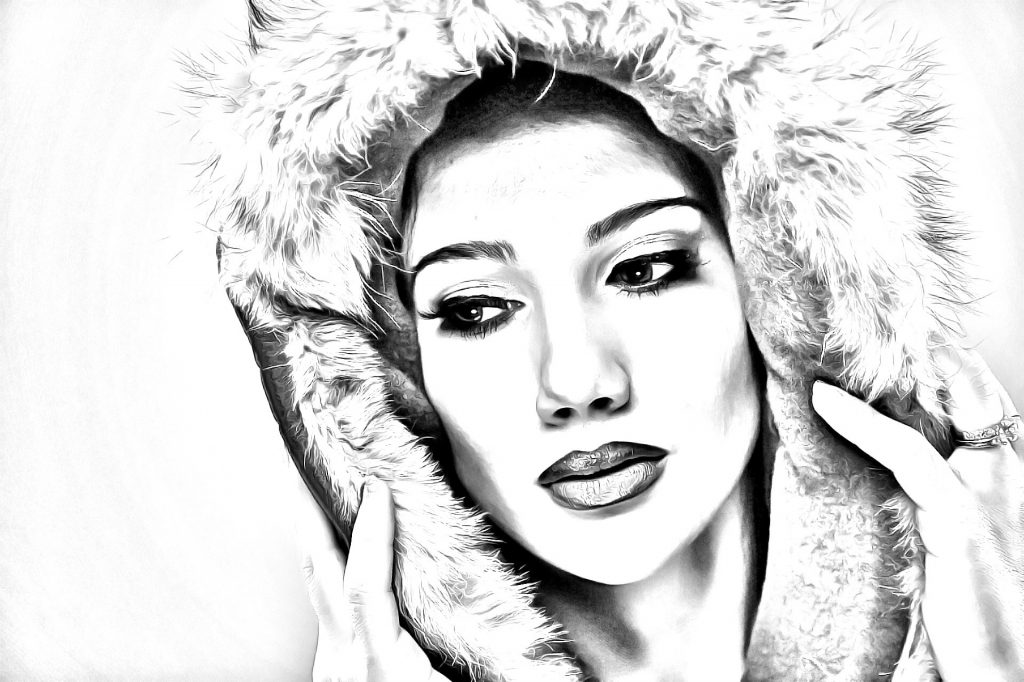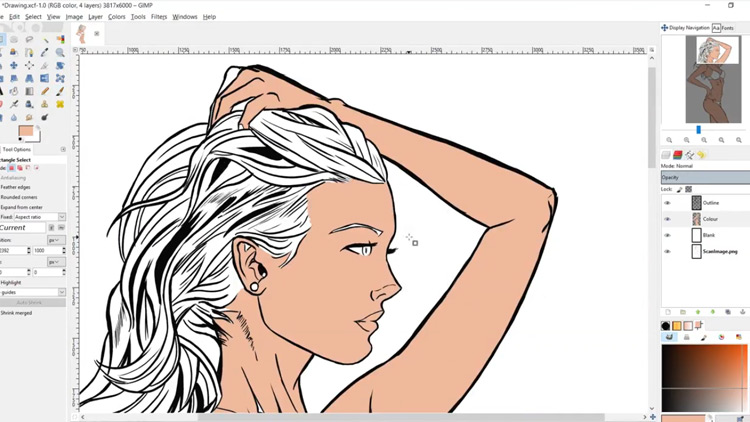

I couldn't get the same result you got with PS, but then I tried with PS and I couldn't get the same results either. I did some tests with your files last night and tried a couple of extra methods. You could use a hybrid method with CMYKtool (for the CMY conversion) and overprint the black strokes re-opening the CMYK file with GIMP and Separate+, and there you'd have more control and correct color appearance. it gives 320% total ink amount (which is inside the Fogra27L limits) when maybe something like 280% would be dry faster and look as deep as the other combination. The rich black proposed by your publisher is rather heavy. Using that you can't have the exact CMY values under the black ink (neither a clean separation between line-art and color) but it would be more appropriate for print, since it would preserve the ink limits and a preserve the color appearance better. I was about to suggest you to try CMYKtool (specially with devicelink profiles, so you create a custom black generation curve for the rich black line-art). (FR) "Colorisation de BD Du traditionnel au numérique" (FR) de Stéphane Baril, Naïts ( ).
Draw in gimp archive#
Here is an archive file with the final RVB file in xcf and the CMYK in TIFF.
Draw in gimp download#
Result of the CMYK conversion with Photoshop CS2 Download :
Draw in gimp iso#
I finish with saving to the TIFF file format, with the CMYK ICC profile asked by my publisher too, here a 'Europe ISO Coted Fogra27'.įor saving disk space, I allow a LZW compression. I change the color on the layer of line-art to use only Black 100% and on the grey I setup the grey of my publisher : C=80% M=70% Y=70%. On Photoshop, I convert my file using the layer group properties to restrict the channel on the black ink, I use only 'K', and on the color and the grey channel I use only 'CMY'. To give the file to Photoshop, I save in PSD. When it's done, I fill the new selection with a dark grey. I prepare the grey layer in Gimp I use the 'Alpha to selection' on my line-art layer combined with a 'Shrink selection' of 1 pixel. Also, I want to prepare under the line-art a dark grey to make the black look deeper when it will be printed.įill the selection with grey on a new layer I want here to have all the color using the CMY cartbridge colors only and the line-art using pure Black color ink. Be sure when I will know it, I will be the first to use it.
Draw in gimp how to#
The final RGB colorisation 5) Export for printįor exporting in CMYK I still use my license of Photoshop CS2 ( with Wine ) cause I still don't know how to do it with the security of a corect result with only FLOSS. You can play with the balance of colors to warm up the overall too. If you want to add a bit more of life, you can brush with a rounded basic brush over the colors layer with some brighter strokes and a low opacity. For most of the fast cartoons with a cell-shading rendering this step can be the final. Open a large color palette to make this process easier. With the Fill bucket tool ( with the option 'fill similar color' and a low 'treshold' ), it's easy now and fast to replace each automatic psychadelic colors of the Multifill script. Importing the line-art over the result 4) Colors When it's finish delete the layer above with Line-art + red limits and load ( load as new layer ) your old copy of final Line-art ( the one without red lines ).Īs you see on the animation above the advantage of this script is in the clean result of the colorisation : each zone frontier are right in the middle of the thickness of your black lines. I launch the script 'Multi-Fill' with the same setting as in the screenshot above and I let the script detect each closed zone, and fill with a random color. I add a new layer under my line art, and I start with a thinner G-pen in red to draw the limit of each different color zone I want. This is probably the main section of this tutorial.

When it's finish, I save my work, and I save in another file a copy of the final Line-art layer I will need it later.įinishing the inking with a white layer under 3) Multi-Fill The screenshot above show the setting I use with G-Pen.Īt the end, I add a white layer under my line-art to finish my inking. With the G-Pen tool of Gimp-painter I start to ink my drawing, on a separate empty layer. I start to convert my pencil artwork in a light blue range of colors I use the tool colorize ( Color > Colorize ). To produce a beautifull result, I play with the level to clean white. First step is the scanner acquisition with Xsane of my drawing (HB pencil on A4 paper ).


 0 kommentar(er)
0 kommentar(er)
